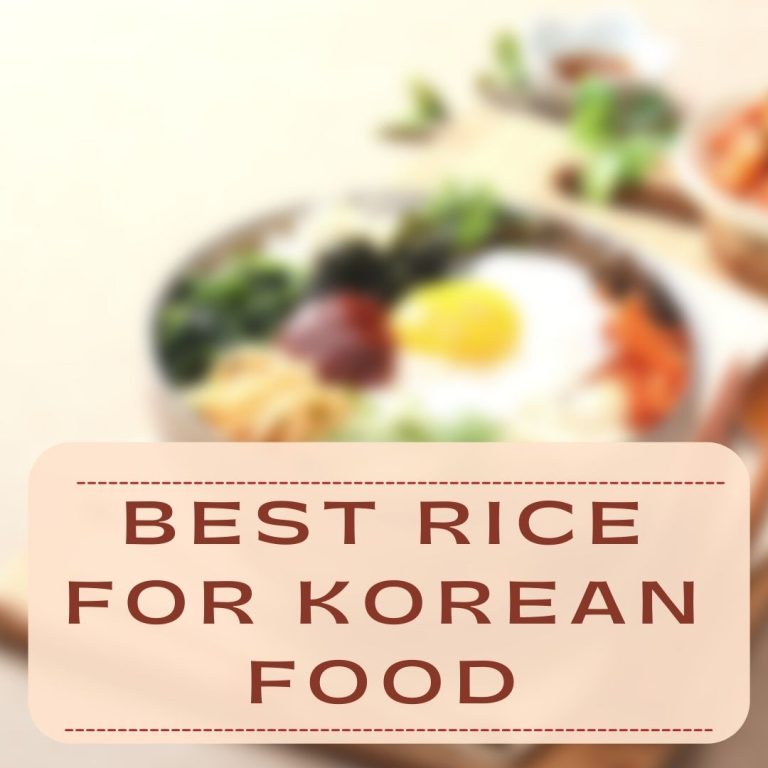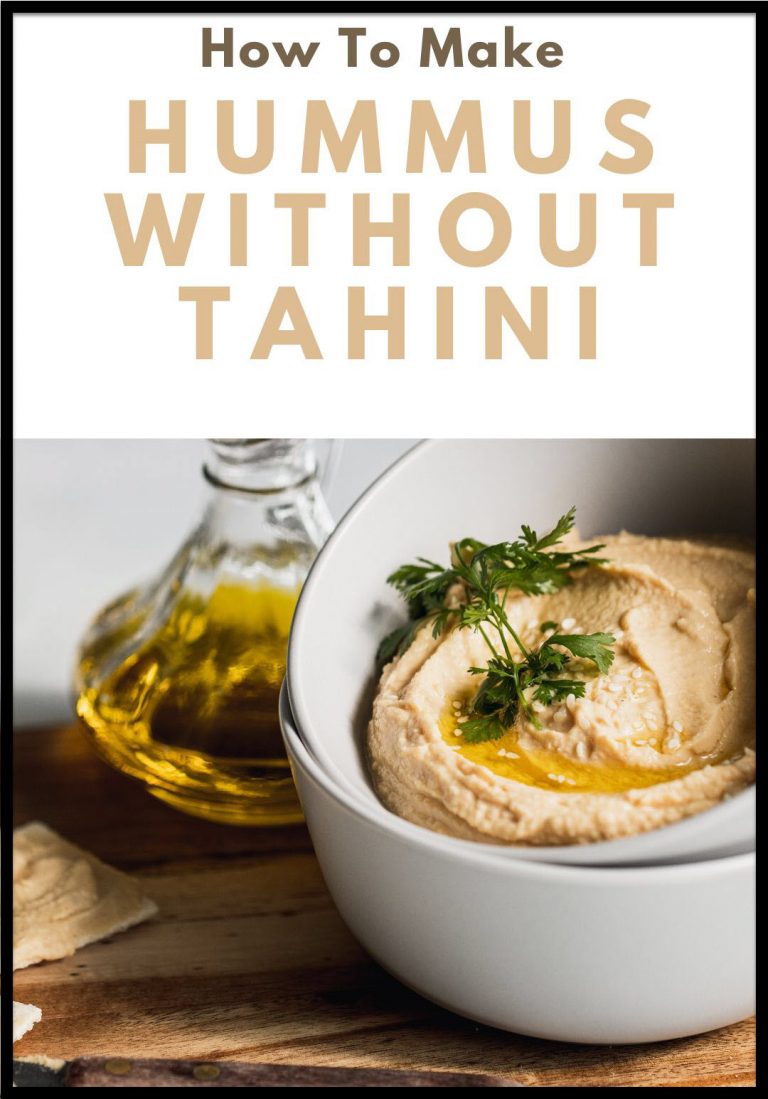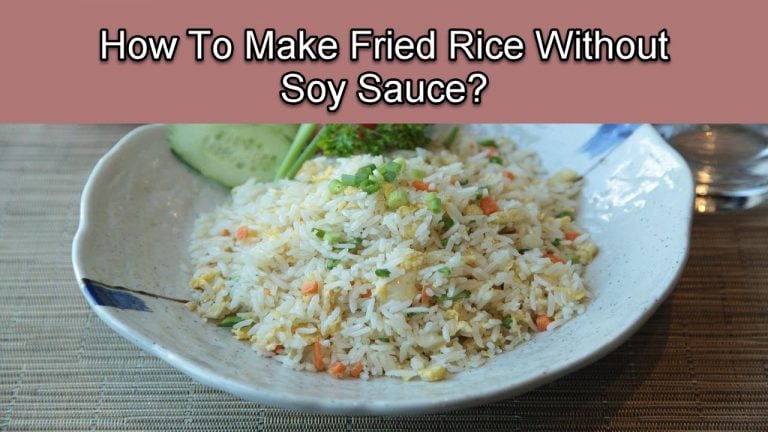How To Reheat Sticky Rice?

Do you enjoy eating sticky rice? Have you tried making one but ended up with much too much rice? That’s totally fine. I think everyone has experienced it.
| Product | Brand | Name | Price |
|---|---|---|---|
 | Sunlee | Sunlee Thai Sweet Rice - Premium Sticky Rice | Check Price on Amazon |
 | Food to Live | Glutinous Sweet Sticky Rice | Check Price on Amazon |
 | RiceSelect | RiceSelect Discoveries Sweet Sticky Dessert Rice | Check Price on Amazon |
 | ROM AMERICA | ROM AMERICA Sweet Rice Sticky Rice Glutinous Rice | Check Price on Amazon |
 | Sattie | Hakubai Japanese Sweet Rice | Check Price on Amazon |
* If you buy through links on our site, we may earn an affiliate commission. For more details, please visit our Privacy policy page.
Find out how to reheat sticky rice when you have produced more than you can consume. If you are interested in reheating sticky rice, scroll down and continue reading.
How To Reheat Sticky Rice

What Is Sticky Rice?
Also known as sweet rice, sticky rice, or waxy rice. It is a kind of rice with opaque grains, with a very low amylose content, and is very sticky when cooked. It is mostly prevalent in Southeast and East Asia, Northeastern India, and Bhutan. Most countries in Asia consume a lot of it.
It doesn’t have gluten in it. It is referred as glutinous because it is sticky or glue-like. Although it is sometimes referred to as sticky rice, it is distinct from non-glutinous strains of japonica rice, which also get somewhat sticky when cooked. Sticky rice comes in a variety of cultivars, including the japonica, Indica, and tropical japonica varieties.
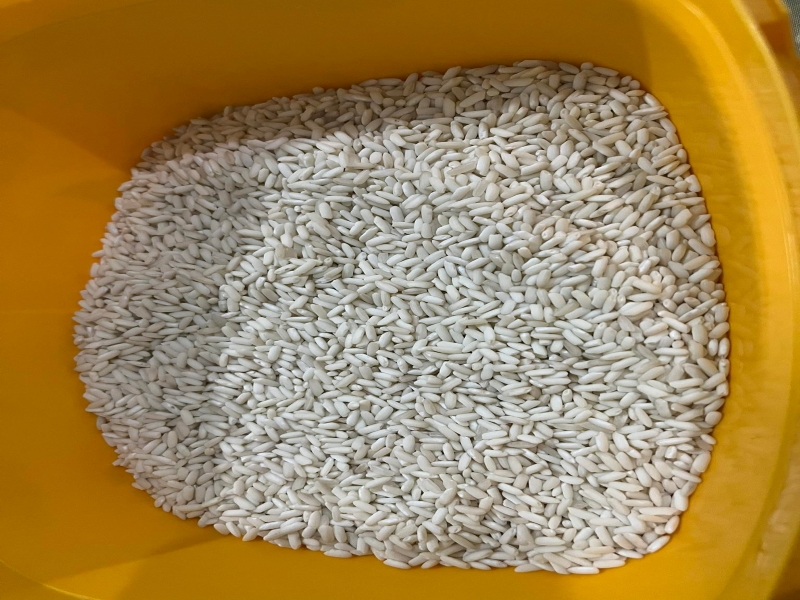
History Of Sticky Rice
Production of sticky rice dates back at least 2,000 years in China. But according to historians, the early southern migration and dispersion of the Tai ethnic groups, specifically the Lao around the Mekong River basin, which originated in Southern China, and sticky rice appear to have been culturally influenced and closely linked.
For around 4,000 and 6,000 years, the Lao people have been producing sticky rice throughout the Greater Mekong Sub-region. Laos’ national dish is glutinous rice. The world’s greatest per capita intake of sticky rice occurs in Laos, a small landlocked country with a population of around 6 million, at 171 kilograms (or 377 pounds) annually. The culture, religious tradition, and national identity of Laos are all strongly affected by sticky rice. Glutinous or sticky rice is said to bind their nation and society together. Lao people frequently refer see themselves as the “children of sticky rice,” and claim that they would not be Lao if they did not consume sticky rice.
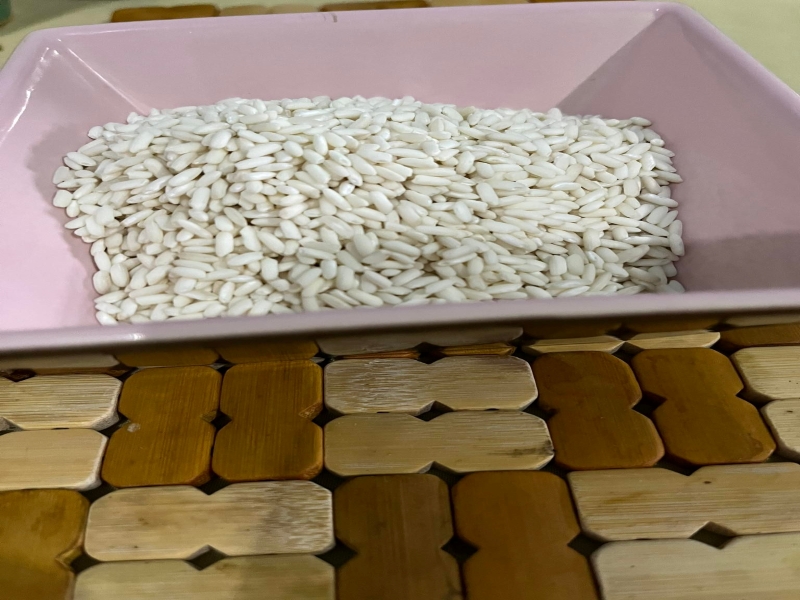
Composition Of Sticky Rice
Sticky rice rice differs from other forms of rice in that it has little to no amylose starch and a lot of amylopectin (these are the 2 components of starch). Glutinous rice has a sticky texture because to amylopectin. The distinction can be attributed to a single mutation that farmers picked for.
Glutinous rice, like all variants of rice, is free of dietary gluten (glutenin and gliadin), hence it is perfect for gluten-free diets.
You have the option to use sticky rice either milled or unmilled, which means with the bran removed or not removed. Unmilled sticky rice can have a purple or black hue from the bran, however milled glutinous rice is white and completely opaque, unlike non-glutinous rice types, which are slightly transparent when raw. Different strains of white glutinous rice include black and purple varieties. There are few regulations in developing Asia, and several countries have issued warnings regarding the use of hazardous colors to color contaminated rice. Both black and white glutinous rice can be prepared as discrete grains or as a paste or gel by grinding the rice into flour.
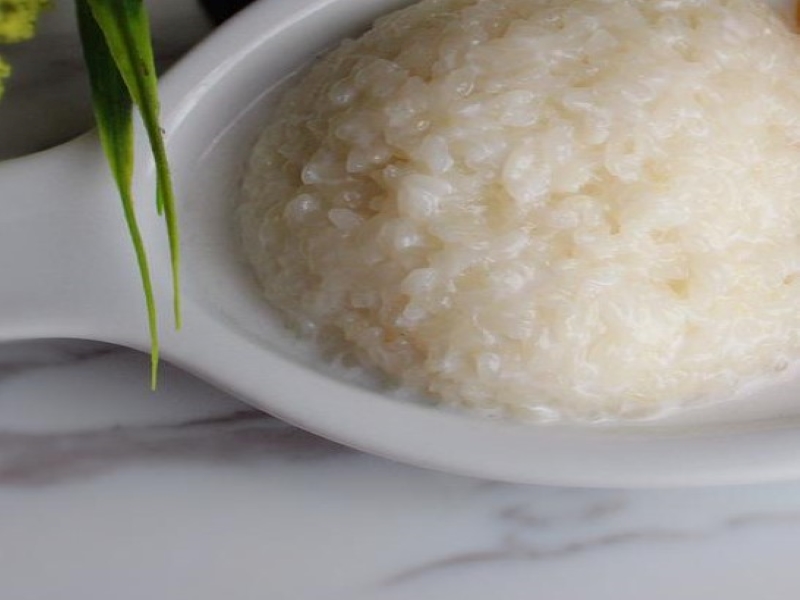
Why Should Leftover Sticky Rice Be Reheated?
You have to reheat sticky rice if you still have many left. Waxy grains normally turn stiff after being left outdoors for two to three hours. As the stomach cannot break down the hard food, eating such cooled grains may create digestive problems. Additionally, if the grain is not stored correctly, it may get contaminated by bacteria or toxic insects. The bacteria may be removed from the old bran by heating it to resolve this problem.
Cooked grain may be recooked, but it can change the flavor of the grains. The grain will smell just as nice after being cooked a second time when it is boiled at a high temperature. It will take less time to boil the old bran than the new grain, which is another advantage.
White grains are quite essential, it’s not good throw away leftover rice, because it is a healthy food. Additionally, consuming leftover sticky rice is a cost-effective approach to save money. The techniques to reheat leftover sticky rice are listed below.
Different Methods To Reheat Sticky Rice
1. Reheating Sticky Rice In The Rice Cooker
One of the most practical kitchen equipment for conveniently reheating sticky rice is by using a rice cooker. If you had a mango sticky rice for breakfast, and you have too much sticky rice left, you can still reheat mango sticky rice. This is probably the best way to reheat the sticky rice. Here’s how to use this technique without much effort :
- To fit the sticky rice into the rice cooker, divide the rice into small portions, it should not be larger than your hand.
- To keep the grain moist throughout, add one or two spoons of water to the surface of the grain. Additionally, the water has the ability to alter how sticky the grains are.
- After properly placing the waxy grains, set the timer for 10 to 15 minutes at the Warming function. Wait until the procedure is complete, check the temperature of the grains, and then, if necessary, add extra heating.
Note:
In addition to this approach, you also have the option to add the leftover sticky rice to the freshly cooked one. The old grains are placed in the cooker’s corner after the fresh cooking process is almost done. The fresh grain is cooked at the same time as the old grain is warmed.
This reheating process is simple and efficient. The cooker may adjust the grain’s stickiness while maintaining its great taste.
You should only put a small bit of grain on it since a huge amount will prevent this approach from functioning. In addition, the cooker can only heat the grain to a medium temperature for a little period of time.
2. Reheating Sticky Rice In The Microwave
Since a microwave can achieve high temperatures in only a second, it is the quickest method for rewarming savory dishes. This is the best option if you have a hectic schedule.
- Place the waxy grains in a microwave-safe bowl. Keep in mind that the plastic bowl will melt on the burner if you use it.
- To keep the food’s stickiness, drizzle a thin layer of water over the top of the bran. To give the bran more flavor and improve the aroma, you have the option to use chicken stock in place of water.
- Next, place plastic wrap over the bowl and make few holes for steam venting. By doing this, the bran will remain moist.
- Heat for two to three minutes on ta low heat setting. You should keep checking on the sticky rice while the oven is running to make sure the food hasn’t dried up.
Note
The quality of reheated rice after rewarming in the microwave is extremely good. The reheated sticky rice can retain its hydration and its enticing aroma. Furthermore, compared to other ways, the warmth of the reheated rice lasts longer.
This process of reheating rice is quick and practical. However, because the high temperature can quickly dry up the grains, it would be beneficial if you didn’t leave the bran in the microwave for an extended period of time.
3. Reheating Sticky Rice In The Oven
The ideal choice is an oven if a stovetop nor a microwave are accessible in your home. Due of its comparable characteristics to the microwave, this kitchen equipment is a perfect substitute. This kitchen appliance’s heating method won’t take very long.
- Heat the oven to 300°F (150°C) in order to reheat sticky rice. This approach will accelerate the oven’s warming process.
- Put the rice in an oven-safe baking dish while it’s heating up, breaking up any clumps, and then put 3 tablespoons of water. The dish should be heated for five to ten minutes with a cover or aluminum foil on top.
- Check on it after 5 minutes and determine how much longer it needs to cook because the precise timeframes may vary based on the portion size and your oven.
This works well to reheat a significant quantity of sticky rice. The taste of the sticky rice in the oven is just as good as it is in the microwave. Water should be added in moderation; else, the cooked rice will dry up.
Reheating Sticky Rice Using A Steamer
One of the best methods to steam rice is through bamboo steamer, but whatever steamer you have will work.
- To reheat sticky rice, prepare the steamer and simmer some water.
- Make a thin layer by adding the rice to the steamer, while breaking up any clumps.
- Cover the steamer, and steam for five minutes.
Reheating Sticky Rice Using A Stove
Another way to reheat sticky rice is by using a stove. You can use the stove to complete the work if there are no electric appliances accessible at the moment. This method is relatively easy.
- Set up a medium-sized pan on the stove to reheat sticky rice. If you don’t have one, a large pan will work just well. You can moisten the pan surface with dry paper or a stove fire to make sure it is absolutely dry.
- You have the option to put vegetable oil or butter in the pan, turn on the heat, and wait for it to melt. Following this procedure will stop your pasty bran from adhering to the pan.
- You may then add the sticky rice and spread it out on the pan once the oil has melted. You should virtually expose the grain to the pan because the stove only heats up from the bottom.
- Waxy bran should be combined with water in a 1:1 ratio, implying that one piece of bran should be equal to one spoon of water. You may use chicken broth in place of water if you want to enhance flavor.
- Heat the old bran for five minutes on low heat. To prevent burning, it is necessary to mix the bran often. Cooking sticky rice using a pan with a lid will accelerate the process and allow the steam to pass through the bran.
How Do You Reheat Frozen Sticky Rice?
Sticky rice that has been put in the freezer can be reheated without first thawing it.
Try to cut the large block of frozen rice into smaller pieces after removing it from the freezer. You can use a rolling pin. After that, add a tablespoon of water and the rice to a bowl that is microwaveable. Heat it in 15-second intervals while covering it. The steamer can also be utilized.
If you’re having difficulty breaking up the rice, warm it up just enough to soften it before breaking it up and continuing to reheat it.
How Should Sticky Rice Be Stored?
Make sure to consume sticky rice within six hours of cooking it. If not, it will be contaminated, which will cause digestive problems. If you want to keep the food for a longer time, there are two ways to do so.
Putting It In The Refrigerator
The bacteria cannot infiltrate the grains because of the refrigerator’s extremely low temperature. The sticky rice can last a week in the refrigerator. Yet, it is advised that you eat them as soon as you can. Simply separate the sticky rice clump into little clumps and ensure that they are cold. To protect them from outside odors before putting them in the refrigerator, wrap them up gently in a storage bag.
Placing In A Cool Area
You might not need to put the sticky rice in the refrigerator if it’s winter season. Its freshness can be maintained by the winter’s typical low temperature. Sticky rice should be sealed in an airtight container or bag since the main issue is that insects could get into the grains.

How To Make Mango Sticky Rice
Ingredients
- 1 cup glutinous rice
- 4 cups water
- 14 oz coconut cream
- 2/3 cups white sugar
- 1/4 tsp kosher salt
- 2 sliced mango
Equipment Used
Instructions
- For at least four hours or overnight, soak the glutinous rice in water. This drastically decreases the amount of steaming time.
- Put enough water in a pot to boil on a steamer after soaking. Steam all of the rice for 20 minutes.
- Use a fork to fluff the rice and confirm its doneness. When you chew the rice, it should be extremely sticky, like that of a glue in texture. It needs to be well cooked without any dry grains.
- The coconut cream, sugar, and salt should be mixed in a saucepan over medium heat while the rice is steaming. Stir constantly to ensure that all of the salt and sugar grains dissolve into the coconut cream. Cook for two to three minutes, or until it begins to thicken moderately.
- 1/4 of this mixture should be kept aside in a mixing dish. Add your rice to this mixing bowl after it has finished steaming to make it sweeter. For the rice to soak, cover the mixing basin with a towel and set aside for ten to fifteen minutes.
- On medium-low heat, simmer the remaining sauce for eight minutes, or until it thickens. The texture ought to resemble maple syrup. The coconut sauce shouldn’t move much if you use your spoon to create a line in your saucepan. Move your sauce to a container after it’s ready.
- Then, place the mango on a platter after slicing it.
- Place the soaked, sweetened sticky rice on the platter, then top with a layer of coconut sauce. Enjoy!
Here are some of the best sticky rice products available in the market today.
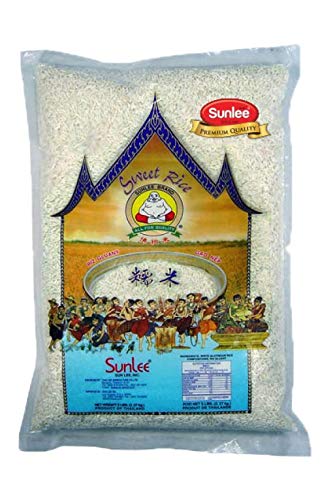
Sunlee Thai Sweet Rice
- Brand: Sunlee
- Package Weight: 2.31 Kilograms
- Variety: Sticky Rice
- Item Form: Grains
They produce quality sweet rice grains. The finest sticky rice grows in Thailand, where their delicious sticky rice is farmed and responsibly collected by skilled growers and local farmers. The quality, well-milled rice grains in the sticky rice 5 pound bag cook up to become glossy, sticky, and translucent.
For people with celiac disease, this rice is ideal. You can make sweets, snacks, and meals that adhere to your gluten-free diet using this Thai sweet rice. Additionally ideal for vegetarians and vegans, the sticky rice.
Very easy to cook. 1 kilogram of sweet glutinous rice should be soaked for one to two hours in cool water. The rice grains will become more soft when cooked the longer you soak them. After that, drain the water. The sticky rice should be steam-cooked for 40 minutes or until done. Enjoy it with your preferred tropical fruit and coconut milk or cream.
Buy this product now on Amazon
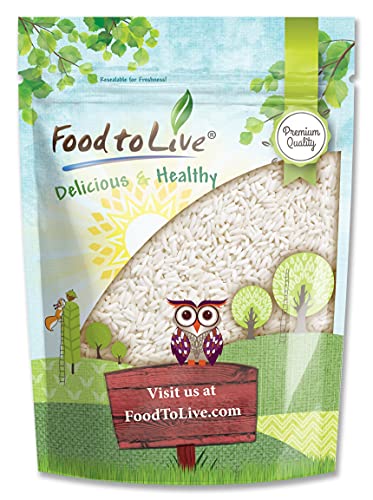
Glutinous Sweet Sticky Rice
- Brand: Food to Live Store
- Weight: 3 pounds
It is premium quality. Glutinous Rice from Food to Live is a medium-grain white rice of top grade. It is additive-free, Kosher, and made entirely from raw ingredients.
Very nutritious. Glutinous Sticky Rice is soft, aromatic, and high in potassium, magnesium, and selenium, among other necessary minerals.
Glutinous rice is versatile and delicious and may be purchased in large quantities. It is sweet and has a sticky texture. It’s ideal for sticky rice meals and sweets including zongzi, shumai, sushi, poke bowls, puddings, and poke. Fruit, vegetables, meat, and fish go perfectly with this sweet rice dish.
Cholesterol and trans fats are not present in Food to Live medium-grain glutinous sweet sticky rice. It is extremely low in salt and free of added sweeteners.
Perfect if steamed. Glutinous rice must be pre-soaked for the ideal softness and stickiness before steaming. You can use a bamboo, cane, or metal steamer.
If you are interested in this product, purchase this now on Amazon

RiceSelect Discoveries Sweet Sticky Dessert
- Brand: RiceSelect
- Weight: 14.5 Ounces
- Allergen Information: BPA-Free, Gluten Free
- Package Information: Jar
- Package Weight: 0.48 Kilograms
One of the best brands of sticky rice in the market today is from RiceSelect.
Glutinous rice, commonly referred to as sweet sticky dessert rice, is now mostly farmed in East Asia and Northeastern India. Their decadent Sweet Rice is appropriate for vegans and vegetarians, low in fat, cholesterol-free, and additive- and preservative-free. It also cooks in only 20 minutes.
This sticky rice is certified Gluten Free, Non-GMO Project Verified, & Certified Kosher by Star K.
Excellent for making rice puddings, porridge, rice cakes, or desserts with sweetened coconut milk and mango on top.
If you are interested in this product, just click on Amazon
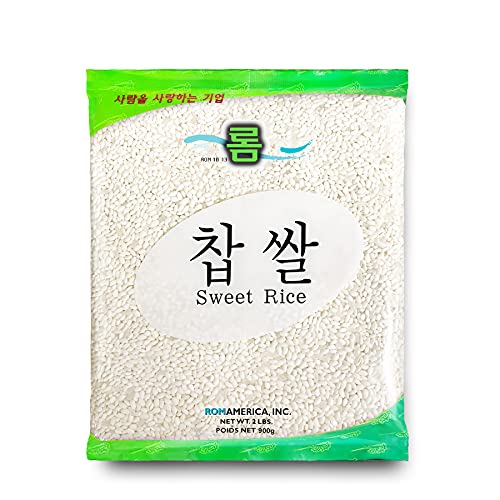
ROM AMERICA Sweet Rice Sticky Rice
- Brand: ROM AMERICA
- Weight: 2 Pounds
- Package Weight: 0.92 Kilograms
- Variety: Sticky Rice
You can make sweets, snacks, and meals using this product. Ideal for creating rice cakes, rice puddings, porridge, or desserts with sweetened coconut milk and mango on top.
Purchase this product now on Amazon

Hakubai Japanese Sweet Rice
- Brand: Hakubai
- Package Information: Bag
- Package Weight: 1.9 Kilograms
- Variety: Sticky Rice
Japanese sweet rice, which is a glutinous rice, is sticky and sweet, making it ideal for preparing a traditional confection called mochi gome.
This package includes two 2-pound bags of dried Japanese sweet rice.
A delightful sticky rice for a range of recipes that is sweet and savory.
You can buy this product on Amazon
| Product | Brand | Name | Price |
|---|---|---|---|
 | Sunlee | Sunlee Thai Sweet Rice - Premium Sticky Rice | Check Price on Amazon |
 | Food to Live | Glutinous Sweet Sticky Rice | Check Price on Amazon |
 | RiceSelect | RiceSelect Discoveries Sweet Sticky Dessert Rice | Check Price on Amazon |
 | ROM AMERICA | ROM AMERICA Sweet Rice Sticky Rice Glutinous Rice | Check Price on Amazon |
 | Sattie | Hakubai Japanese Sweet Rice | Check Price on Amazon |
* If you buy through links on our site, we may earn an affiliate commission. For more details, please visit our Privacy policy page.
